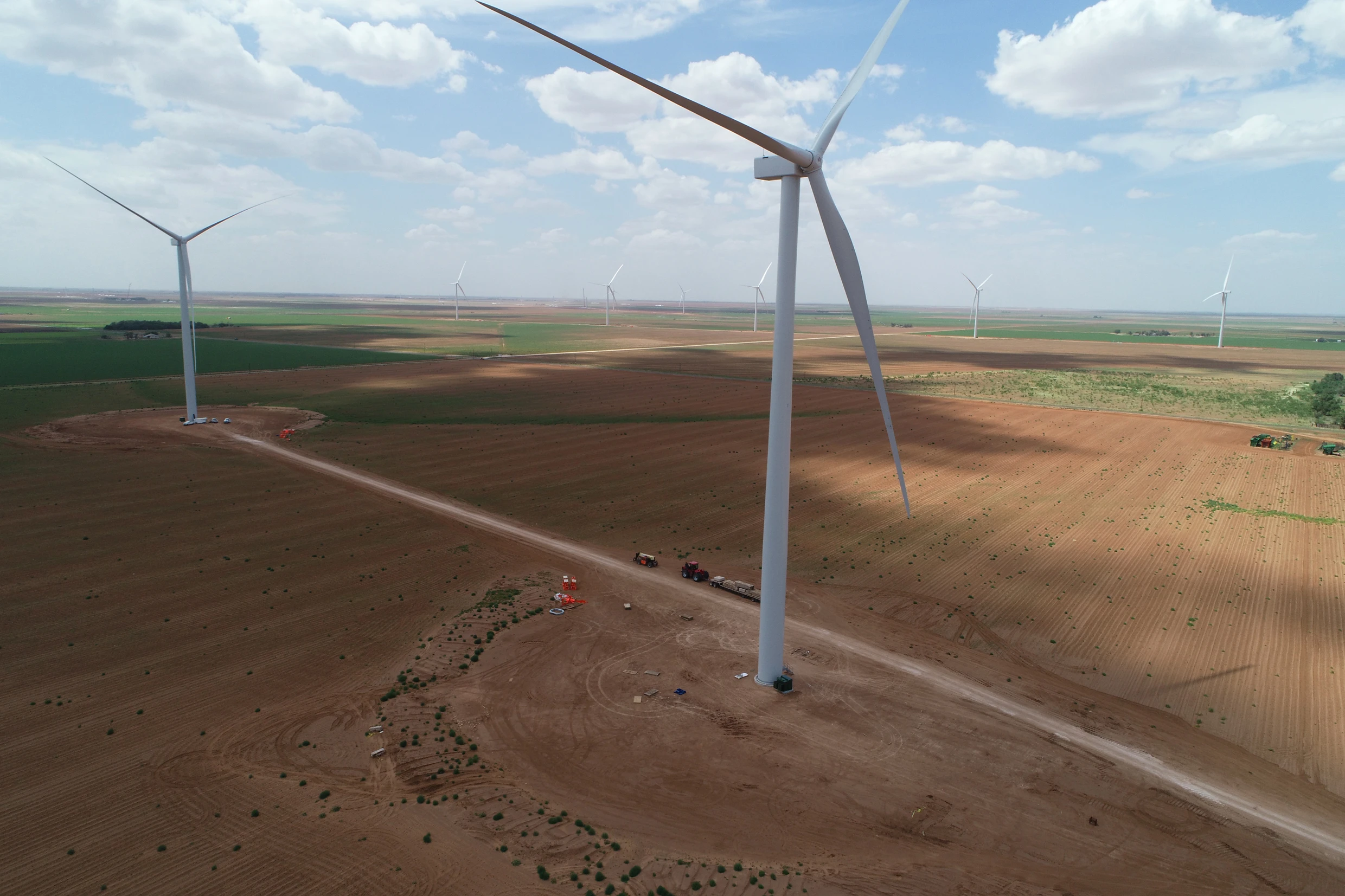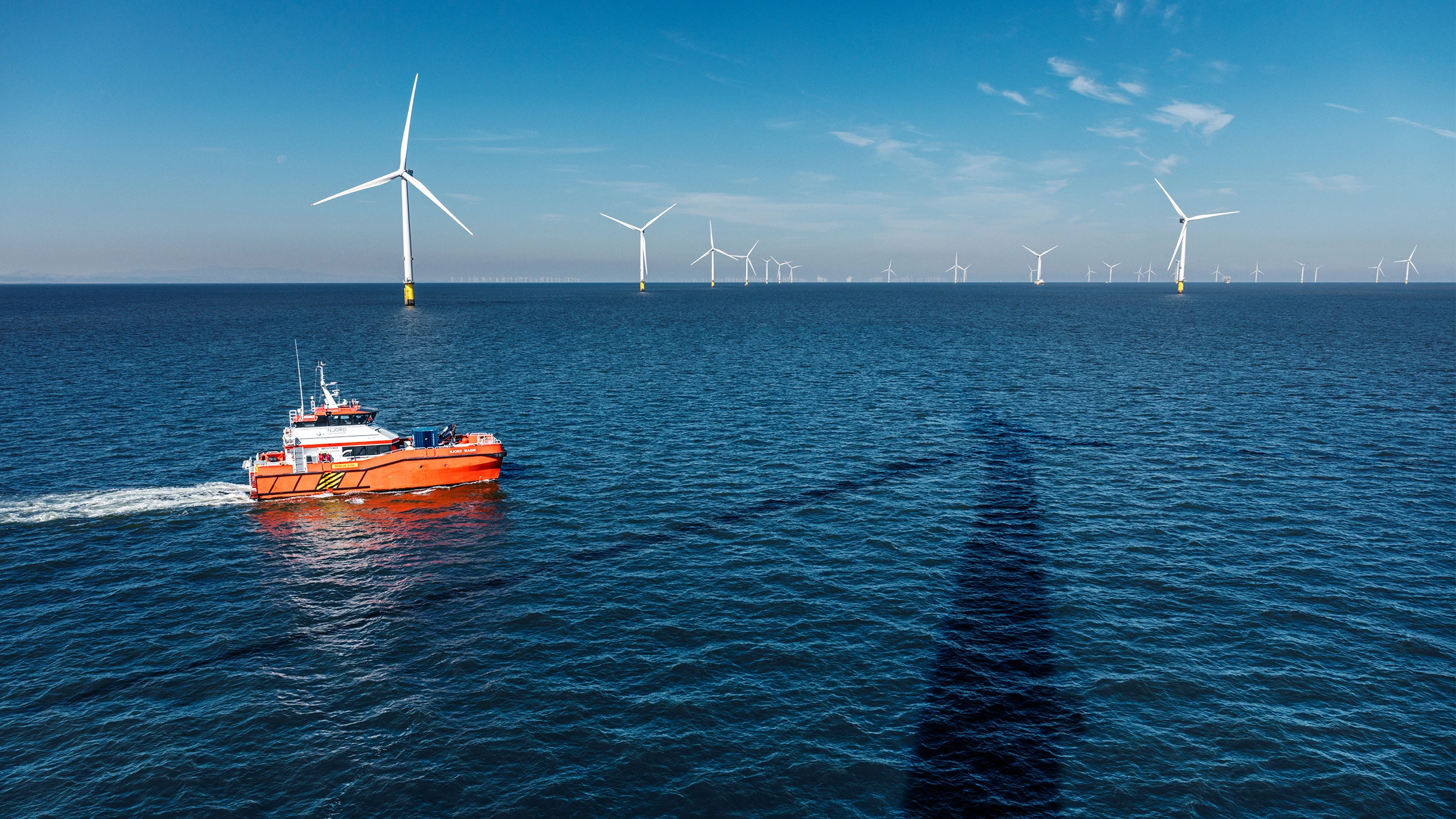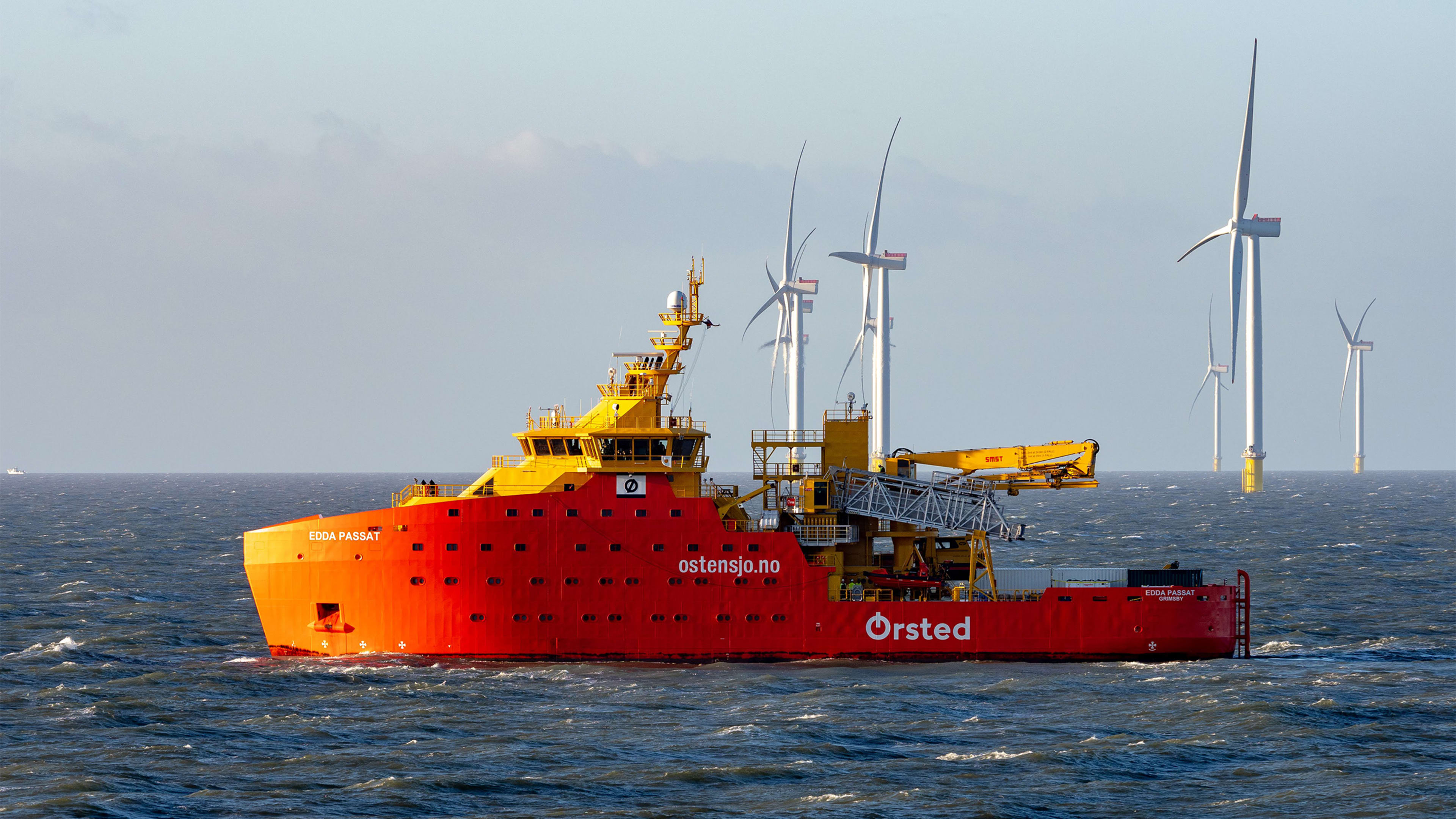A decade ago, the largest energy company in Denmark based its business on fossil fuels and was responsible for a third of the country’s carbon footprint. The company has since changed its name—from Danish Oil and Natural Gas (yes, that’s DONG) to Ørsted, named after a Danish scientist—and is now among the largest renewable energy companies in the world. By 2025, it plans to be carbon neutral, making it the first major energy company in the world to reach that goal.
“We’ve built the new renewable energy company to be the core of our company, and at the same time, we’ve been dismantling the old fossil fuel-based company,” says Jakob Askou Bøss, senior vice president of corporate strategy and stakeholder relations at Ørsted.

The company, which started as a state-run business to manage oil and gas resources in the North Sea in the early 1970s, began acquiring electric utilities running on coal in the early 2000s. But by 2008, it announced a long-term plan to transform “from a black to a green energy company,” he says. “There was, at that point in time, an increasing awareness of climate change in society. We could see that long term it would not be sustainable to base our energy production on fossil fuels.” The European Union was pushing for renewable energy, and had set a target that year for 20% of the European energy supply to come from renewables by 2020. The company’s fossil fuel business also had challenges: as the cost of natural gas fell, the company’s credit rating plummeted. In 2012, a new CEO, Henrik Poulsen, took the opportunity to fully commit to transforming into a sustainable company.
As the company—which is responsible for 49% of electricity production and 35% of heat production in Denmark, though it also has projects in other countries—started to phase out coal and sell off its oil and gas business, it simultaneously began scaling up offshore wind. It moved quickly. “We have been quite convinced all along that we saw the business opportunities in green and renewable energy and not in fossil fuels going forward, so we have also strategically decided to transform fast, and really build up a first-mover advantage in renewable energy,” Bøss says. To date, it has installed a third of the world’s offshore wind turbines, more than any other company.
The shift to offshore wind was risky, because when the company first invested heavily in the technology in 2013, it was much more expensive than standard wind power on land. But those investments help drive the cost down, and it’s now around 70% less expensive than it was six years ago. Now, Bøss says, offshore wind is cost-competitive to build compared to coal and gas-fired power plants.
By 2023, Ørsted plans to end its use of coal; over the last decade, the company has converted three coal-fired power plants to biomass, and just one coal plant remains. By 2025, it will install 20 gigawatts of wind power. The transition to renewables will cut the company’s emissions by 98% compared to 2006. It’s also taking steps to eliminate the final 2% of emissions from its own operations, as in making the company car fleet all-electric. It already buys offsets for some unavoidable emissions, like airline flights.

By 2040, it plans to eliminate emissions beyond its own operations to also include its supply chain. It’s working with the steel industry now, for example, to push manufacturers to quickly decarbonize the steel that it uses to build wind turbines. (Steel is hard to make with renewable energy, but new technology is beginning to change that.) “We have 20 years, and so we have time ahead of us,” says Bøss. “But I think our transformation has also proven how much we can do in 10 years. So we are clearly optimistic that this is that this is doable and possible. Ultimately, it has to be doable and possible, because otherwise we’ll be crossing the threshold that scientists have said is not sustainable. We need to embark on this journey.”
Few other energy companies are moving as quickly. Repsol, a Spanish oil and gas company, plans to reach a net-zero emissions goal by 2050. The Italian oil company ENI plans to reach net-zero by 2030, but without counting customer use of its energy. Shell aims to cut its net carbon footprint in half by 2050, relying in part on strategies like reforestation and carbon capture to reach that goal. Among utilities, in the U.S., Vermont-based Green Mountain Power plans to offer 100% “carbon-free” energy by 2025. Xcel Energy, based in Colorado, plans to offer zero carbon electricity by 2050.
Bøss says that the industry needs to be aggressive. “The challenge for many companies that have a core business around fossil fuels that it takes some time to transform,” he says. A coal power plant, for example, can last for 50 years. “With the requirement set by science that we need to become net-zero in 2050 as the whole world, then you have to move pretty aggressively and decisively in order to make sure that you transform your business in time.”
The radical transition that Ørsted is undergoing can be a model for others, he says. “I think the journey that we have been through is, in a way, the same type of journey that the overall economy and many, many companies will have to travel. We need to find new and sustainable solutions to be able to inhabit our planet and not cause a very disruptive impact on the global ecosystems. This is a journey that all of us will have to go through.”
Recognize your brand’s excellence by applying to this year’s Brands That Matter Awards before the early-rate deadline, May 3.
